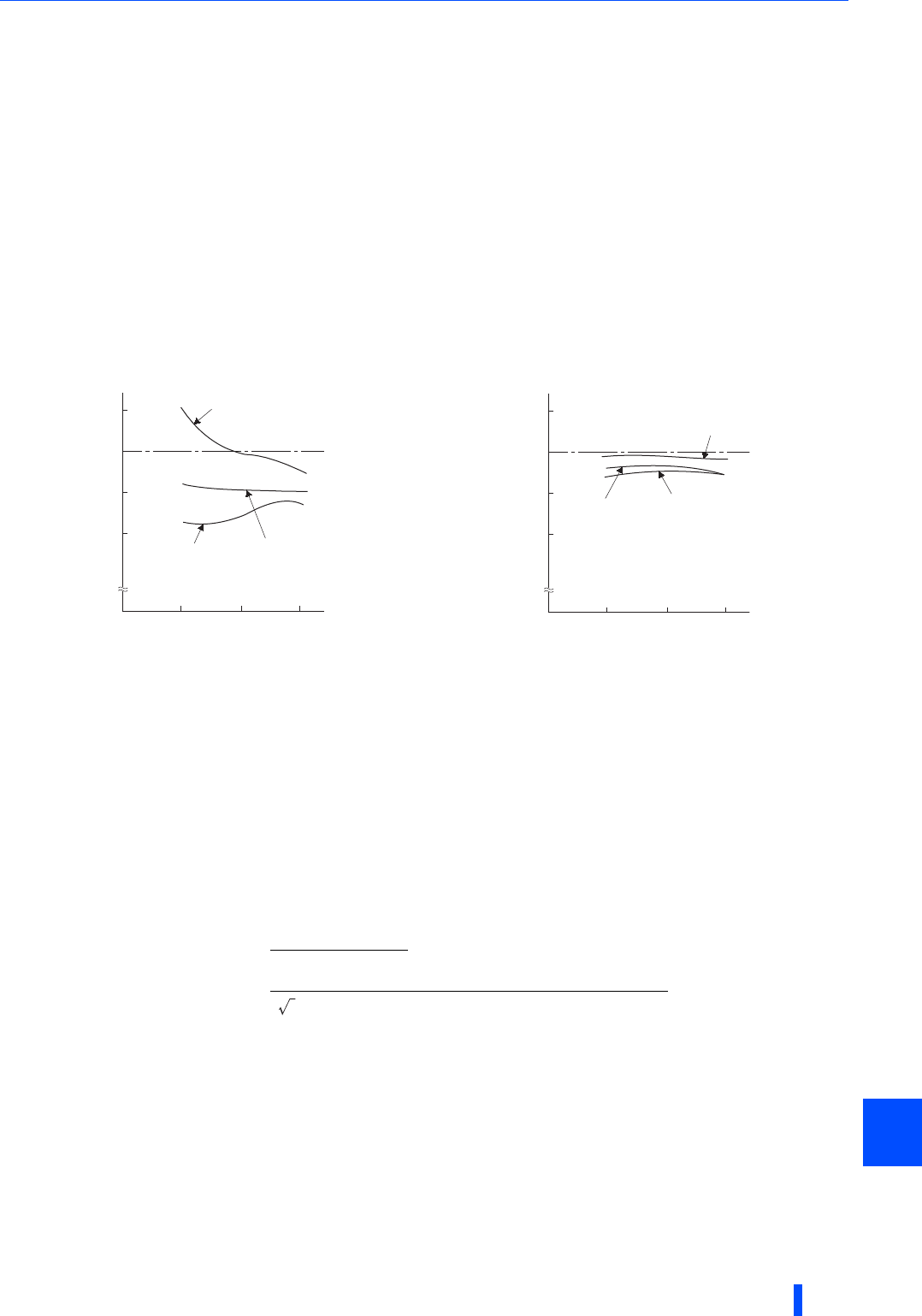
Measurement of main circuit voltages, currents and powers
PRECAUTIONS FOR MAINTENANCE AND INSPECTION
95
5
5.2.3 Measurement of currents
Use moving-iron type meter on the input side of the converter unit (FR-CC2) and the output side of the inverter. However, if
the carrier frequency exceeds 5 kHz, do not use that meter since an overcurrent losses produced in the internal metal parts of
the meter will increase and the meter may burn out. In this case, use an approximate-effective value type.
Since current on the converter unit input side tends to be unbalanced, measurement of three phases is recommended.
Correct value cannot be obtained by measuring only one or two phases. On the other hand, the unbalanced ratio of each
phase of the output side current should be within 10%.
When a clamp ammeter is used, always use an effective value detection type. A mean value detection type produces a large
error and may indicate an extremely smaller value than the actual value. The value monitored on the operation panel is
accurate if the output frequency varies, and it is recommended to monitor values (provide analog output) using the operation
panel.
Examples of measured value differences produced by different measuring meters are shown below.
5.2.4 Use of CT and transducer
A CT may be used in both the input side of the converter unit and the output side of the inverter. Use the one with the largest
possible VA ability because an error will increase if the frequency gets lower.
When using a transducer, use the effective value calculation type which is immune to harmonics.
5.2.5 Example of measuring converter unit (FR-CC2)
input power factor
Calculate using effective power and apparent power. A power-factor meter cannot indicate an exact value.
5.2.6 Measurement of converter output voltage
(across terminals P and N)
The output voltage of the converter is output across terminals P and N and can be measured with a moving-coil type meter
(tester). Although the voltage varies according to the power supply voltage, approximately 540 to 600 V is output when no
load is connected and voltage decreases during driving load operation.
When energy is regenerated from the motor during deceleration, for example, the converter output voltage rises to nearly 800
to 900 V maximum.
[Measurement conditions]
Indicated value of the moving-iron type ammeter is 100%.
Example of measuring converter unit input current
[Measurement conditions]
Indicated value of the moving-iron type ammeter is 100%.
Example of measuring inverter output current
Total power factor of the converter unit =
Effective power
Apparent power
=
Three-phase input power found by the 3-wattmeter method
V (power supply voltage) I (input current effective value)
120
100
80
60
0
60Hz40
20
%
Moving-iron
type
Clamp-on wattmeter
current measurement
Clamp meter
Clip AC
power meter
120
100
80
60
0
60Hz40
20
%
Moving-iron type
Clip AC
power meter
Clamp-on wattmeter
current measurement
Clamp meter
3


















